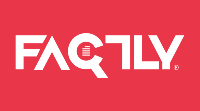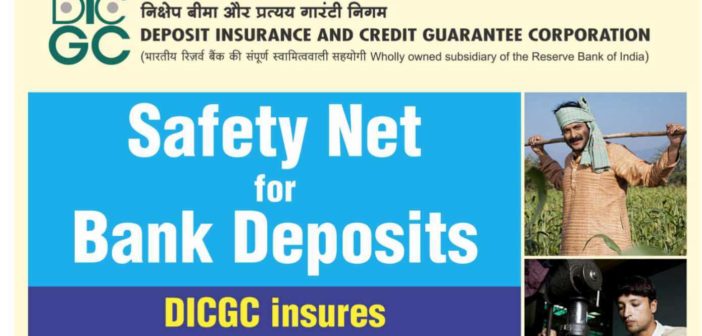India’s Deposit Insurance and Credit Guarantee Corporation (DICGC) is one of the protective mechanisms available to victims of bank closures & liquidations. As of 2024, only 78 out of the 363 cooperative banks have made full repayments to the DICGC. While 11 cooperative banks have made partial repayment, their pending balance was written off by DICGC. The remaining 274 cooperative banks — accounting for about 75% of those liquidated, amalgamated, or reconstructed — have made only partial repayments.
In the wake of financial crises and economic disruptions across the globe, bank liquidations have become an unfortunate but recurring reality. Whether due to mismanagement, inadequate capital buffers, fraud, or systemic shocks, the closure of banks has often left millions of depositors vulnerable, particularly small account holders who rely on local and cooperative banks. In the U.S., the 2008 financial crisis saw the collapse of over 400 banks in just a few years. More recently, the failure of institutions like Silicon Valley Bank in 2023 reignited concerns over depositor security.
In India, similar distress has been observed, especially among urban cooperative banks. A striking case was the Punjab and Maharashtra Co-operative Bank Limited (PMCBL) Bank crisis in 2019, where large-scale fraud involving the real estate firm HDIL led to a regulatory clampdown by the RBI. Depositors faced severe withdrawal restrictions for over two years, leading to emotional appeals and widespread protests. Although the bank was eventually amalgamated with Unity Small Finance Bank in 2022, it underscored the emotional and financial trauma faced by ordinary depositors.
Other examples include the RBI’s cancellation of licenses of banks like Madhavpura Mercantile Cooperative Bank, Rupee Co-operative Bank, and others, citing persistent regulatory non-compliance and poor financial health.
While many reasons are attributed to such bank failures, including systemic failures and poor regulation, they gravely affect customers, leading to loss of access to their savings, delays in reimbursement, among others.
India’s Deposit Insurance and Credit Guarantee Corporation (DICGC) stands as one of the protective mechanisms available to such victims. Established under the DICGC Act of 1961, the institution ensures that each depositor is insured up to ₹5 lakh in case of bank failure. This coverage applies uniformly to all commercial, regional rural, and cooperative banks registered with the Reserve Bank of India. Following legislative reforms in 2021, DICGC now ensures the settlement of claims within two months of a bank’s failure.
In this story, we look at the trends in depositors’ insurance claims, the amount settled, and repayments received from the banks which have run into liquidation, amalgamation, and reconstruction.
Data for this story is sourced from Dataful’s Insurance Claims Settled and Repayments Received dataset, curated from the DICGC’s annual reports
Note: Each year’s data referred to in the story is as of 31 March of that particular year.
As of 2024, the Balance amount to be received by DICGC from claims settled is over Rs. 6000 crores
All commercial banks, regional rural banks, and most cooperative banks in India are mandatorily required to register with DICGC upon obtaining a banking license from the Reserve Bank of India (RBI). This ensures that depositors in these banks are covered under India’s deposit insurance scheme. Once registered, banks must pay a deposit insurance premium to DICGC based on the total value of their assessable deposits.
The DICGC maintains data on claims settled, repayments received, and amounts written off for banks that have undergone liquidation, amalgamation, or reconstruction. These records are categorised separately for commercial and cooperative banks.
As per the data in the annual reports, in the year 2000, the total insurance claims settled by DICGC amounted to ₹225 crore, of which only ₹69 crore was recovered from the defaulting banks — leaving a balance of ₹156 crore yet to be realised. By 2010, the cumulative claims settled rose significantly to ₹3,638 crore, with ₹538 crore recovered and ₹3,106 crore remaining pending. As of 2024, the total claims settled have surged to ₹10,838 crore, while repayments received stood at ₹4,332 crore. The unrecovered balance amounts to ₹6,441 crore, excluding ₹65 crore that has been written off. Notably, there has been a sharp rise in claim settlements since 2022, with the amount more than doubling compared to 2021, when the total stood at approximately ₹5,763 crore. The significant spike is attributed to the settlement of claims worth ₹3,854 crores of Punjab and Maharashtra Cooperative Bank Limited (PMCBL), settled by DICGC in 2022.
Stagnancy in repayments noted from both Commercial and Cooperative Banks
As per DICGC’s data, as of 2024, about 27 commercial banks and 363 cooperative banks have either been liquidated, amalgamated, or reconstructed. This is a substantial increase from 63 such banks in the year 2000,
Among the commercial banks, the total claims amount settled during the year 2000 was ₹173 crore, while the repayments received stood at ₹68 crore. From 2003 to 2006, the total claims settled remained consistent at ₹290 crore, then slightly increased to ₹296 crore in 2007. Since then, this figure has stayed stable at ₹296 crore through to the latest available year, 2024. On the repayment side, ₹77 crore was received in 2003, increasing to ₹110 crore in 2008, and remaining within the range of ₹148 crore to ₹158 crore from 2013 to 2024.
This stagnancy in the claims settled among commercial banks may reflect a decline in bank failures within this category. Supporting this, the Ministry of Finance, in a recent Parliamentary reply dated 25 March 2025, stated that no commercial bank has failed in the last three years, and no licenses were cancelled during this period. But, during the same period, licenses of 40 urban co-operative banks were cancelled.
However, it is worth noting that even the repayments received by DICGC from the commercial banks have shown only a marginal increase of about ₹10 crore between 2013 and 2024, pointing to a broader trend of repayment stagnation.
Among cooperative banks, the claims settled and repayments received were ₹52 crore and ₹1 crore, respectively, in 2000. These figures rose to ₹3,343 crore and ₹402 crore in 2010, and further to ₹4,903 crore and ₹2,715 crore in 2020. By 2024, the claims settled had reached ₹10,542 crore, with repayments received at ₹4,175 crore.
Notably, while the claims amount nearly doubled between 2021 and 2024, the repayments received increased only modestly — from ₹3,282 crore in 2021 to ₹4,175 crore in 2024. Therefore, repayment trends among cooperative banks mirror those seen in commercial banks.
As of 2024, over 75% of cooperative banks made only partial repayments; PMCBL aggregates the highest
The DICGC further categorises claims settled and repayments received data into banks which have made full repayment, banks which have made partial repayment, and banks which have made partial repayment with the balance amount written off by DICGC.
As per this data, as of 2024, of the 27 commercial banks that have been liquidated, amalgamated, or reconstructed, 9 banks have made full repayment of the claims amount provided by DICGC to the depositors. While 5 banks have made partial repayment, with the balance amount still due, the remaining 13 banks’ balance amounts were written off by DICGC after receiving only a partial payment. Thus, only about one-third of the commercial banks have completed full repayment to DICGC.
In the case of cooperative banks, only 78 out of the total 363 have made full repayments. Meanwhile, 11 cooperative banks have made partial repayment, but their pending balance was written off by DICGC. The remaining 274 cooperative banks — accounting for about 75% of those liquidated, amalgamated, or reconstructed — have made only partial repayments.
As of 2024, the commercial bank in terms of the largest balance amount yet to be paid to DICGC is Benaras State Bank Limited, which owes ₹46 crore.
Among cooperative banks, the highest is from PMCBL, which was amalgamated with Unity Small Finance Bank in 2022. The total amount of claims settled by DICGC for PMCBL depositors in 2022 was ₹3,854 crore. As of 2024, not a single rupee has been repaid to DICGC. In other words, PMCBL alone accounts for 60% of the total ₹6,441 crore yet to be repaid by defaulting cooperative banks.
Following PMCBL is Karnala Nagari Sahakari Bank Limited (Karnala NSBL), whose license was cancelled by the RBI in 2022. DICGC settled ₹379 crore in claims for its depositors. Similar to PMCBL, Karnala NSBL has also not made any repayment to DICGC as of 2024.
In total, four cooperative banks had over ₹100 crore each in balance repayments due to DICGC. About 40 cooperative banks had balances between ₹10 crore and ₹100 crore, while the rest had less than ₹10 crore pending repayment to DICGC.



